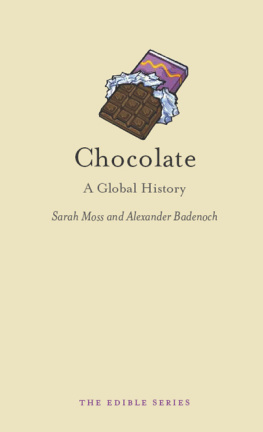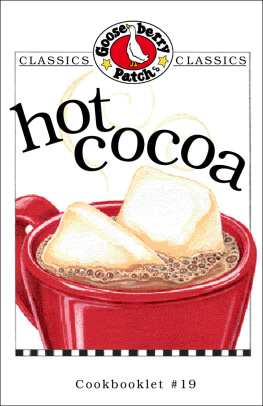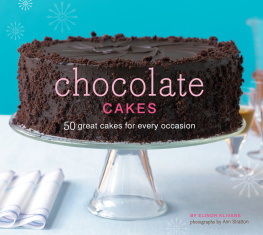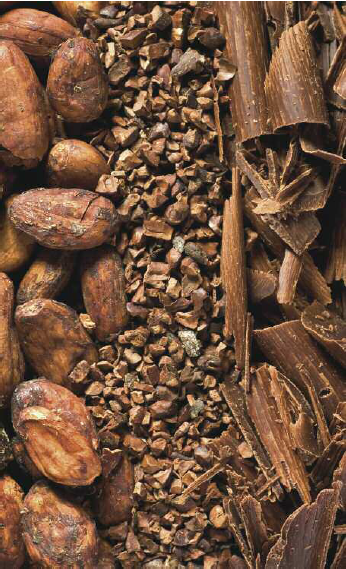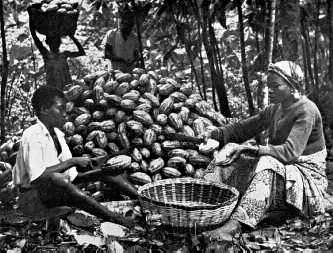Sarah Moss - Chocolate: A Global History
Here you can read online Sarah Moss - Chocolate: A Global History full text of the book (entire story) in english for free. Download pdf and epub, get meaning, cover and reviews about this ebook. year: 2009, publisher: Reaktion Books, genre: Home and family. Description of the work, (preface) as well as reviews are available. Best literature library LitArk.com created for fans of good reading and offers a wide selection of genres:
Romance novel
Science fiction
Adventure
Detective
Science
History
Home and family
Prose
Art
Politics
Computer
Non-fiction
Religion
Business
Children
Humor
Choose a favorite category and find really read worthwhile books. Enjoy immersion in the world of imagination, feel the emotions of the characters or learn something new for yourself, make an fascinating discovery.
- Book:Chocolate: A Global History
- Author:
- Publisher:Reaktion Books
- Genre:
- Year:2009
- Rating:4 / 5
- Favourites:Add to favourites
- Your mark:
Chocolate: A Global History: summary, description and annotation
We offer to read an annotation, description, summary or preface (depends on what the author of the book "Chocolate: A Global History" wrote himself). If you haven't found the necessary information about the book — write in the comments, we will try to find it.
Chocolate layer cake. Fudge brownies. Chocolate chip cookies. Boxes of chocolate truffles. Cups of cocoa. Hot fudge sundaes. Chocolate is synonymous with our cultural sweet tooth, our restaurant dessert menus, and our idea of indulgence. Chocolate is adored around the world and has been since the Spanish first encountered cocoa beans in South America in the sixteenth century. It is seen as magical, addictive, and powerful beyond anything that can be explained by its ingredients, and in Chocolate Sarah Moss and Alec Badenoch explore the origins and growth of this almost universal obsession.
Moss and Badenoch recount the history of chocolate, which from ancient times has been associated with sexuality, sin, blood, and sacrifice. The first Spanish accounts claim that the Aztecs and Mayans used chocolate as a substitute for blood in sacrificial rituals and as a currency to replace gold. In the eighteenth century chocolate became regarded as an aphrodisiacthe first step on the road to todays boxes of Valentine delights. Chocolate also looks at todays mass-production of chocolate, with brands such as Hersheys, Lindt, and Cadbury dominating our supermarket shelves.
Packed with tempting images and decadent descriptions of chocolate throughout
the ages, Chocolate will be as irresistible as the tasty treats it describes.
Sarah Moss: author's other books
Who wrote Chocolate: A Global History? Find out the surname, the name of the author of the book and a list of all author's works by series.

